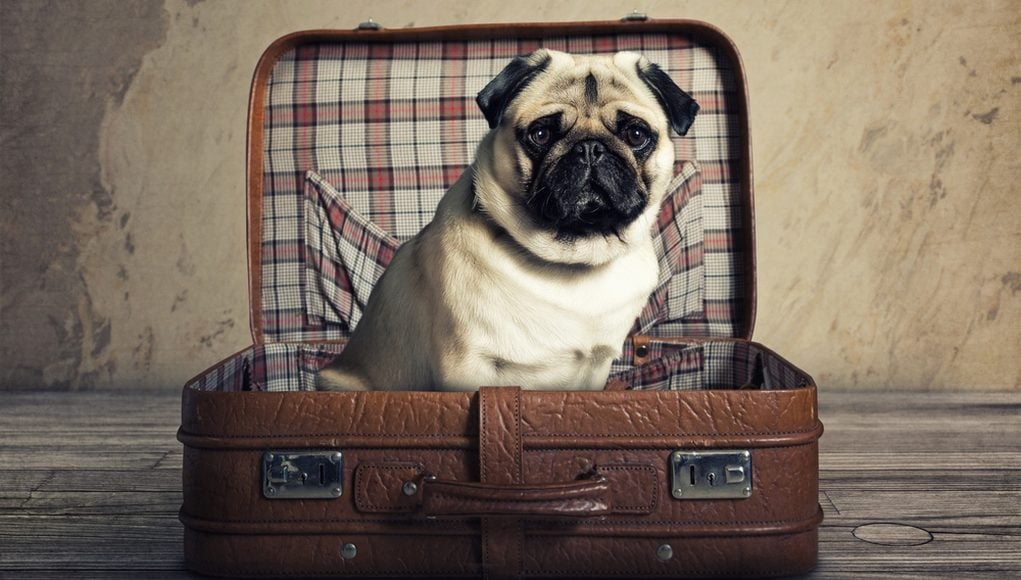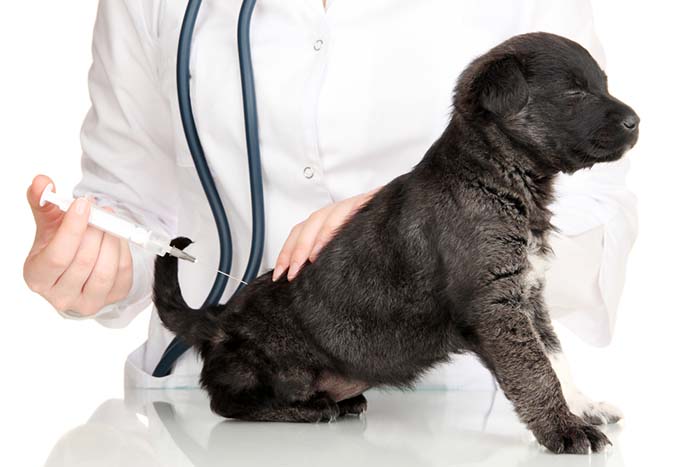Traveling with your four-legged friend can sometimes be stressful if you own a dog.
Whether it is just a few hours' drives or a four-hour flight, there are several things that you can do to make a trip with your canine much more enjoyable for both of you.
Follow a few comfort and safety doggy traveling tips to arrive at your destination more relaxed and happy.
Many fear their traveling days would be over if they got a dog. While it may take a little more time to plan, having a dog doesn't have to tie you down.
Once you weigh your options and plan how to travel with a dog efficiently and safely, you may only need to make slight changes for each trip with little compromise.
One important thing to remember is to start planning your dog-friendly trips early.
If you have a young puppy who likes to travel, take him on short trips immediately.
Get your puppy used to a dog crate, car seats, strangers, and other related aspects of traveling before you try going on an extended vacation.
Once you're ready, the following tips will help you prepare for a more extended adventure with your canine companion.
ALSO READ: 15 Clever Tips for Traveling with Dogs in Cars
6 Tips for Long Distance Traveling with Your Dog
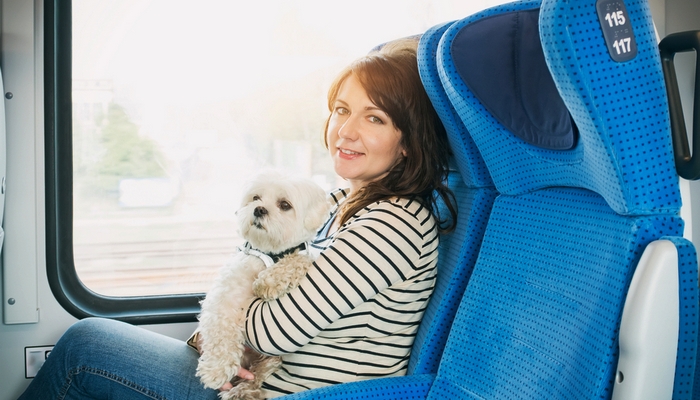 Remember to have food and water for your dog, always
Remember to have food and water for your dog, always
I have been in situations before where I needed water for my dog and didn't have a way to give it to them.
I even had the water, but no dog bowl for it.
Even for a short trip, always have food, water, and bowls with you (or you can use dog water bottles for some extra convenience).
You also need to keep enough dog food (or dog treats) with you for the duration of the trip and a collapsible dog bowl.
That way, if there is a traffic jam, vehicle breakdown, or other issues, you have what you need to ensure your fur baby is hydrated and comfortable.
Planning for dog supplies in advance will save the headache down the road.
Ensure the safety of your dog with the right supplies
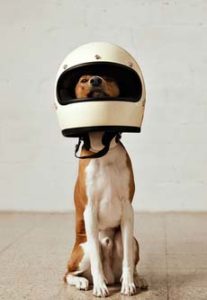
Every day I see someone on the road with their pet on their lap.
Pet owners do not realize this is very dangerous (and even illegal) – not just for your dog, but for the people in the car.
I actually know someone who got in an accident with their dog riding in the car.
Pet carriers for dogs.
There are many pet carriers, from sturdy plastic to soft bed-like ones.
If you are traveling on an airline, make sure you know that particular airline's rules and what pet carriers they allow.
If you can get a carrier small enough, they will let you put it under your seat in the cabin, so your dog is always close by.
You can also get a dog carrier with compartments for treats, medicines, and a small bowl for your journey.
If you must check your dog into baggage, choose an airline with an outstanding record of transporting pets.
Harnesses and doggy seat belts.
Alternatively, you can get a car seat harness for your dog to strap him in and keep your pup safe and secure.
There are several types of dog seat belts, and some of the best are those that attach to the car seat tethers in newer model vehicles.
Our editor Samantha has done an extensive written and video review of several dog car seat belts and harnesses, which I recommend you check out.
Also, confirm that whatever you have will work great in case of a crash (read more here).
Travel dog crates.
Finally, owners traveling by car should invest in crash-safe dog travel crates.
Only buy one that easily attaches to car seats for safety reasons, so they do not slide.
This keeps your dog safe and anxiety-free, especially for long car trips.
Always ensure that your carrier is perfect for your dog size-wise so that he has enough room to stand and turn around but not too much so that he'd be sliding in the dog crate.
Watch the below video and read the guide to learn how to measure for a perfect crate.
GUIDE: How To Choose the Right Size Dog Crate or Carrier
Alternatively, secure your dog in his own car seat
Regarding safety supplies for a trip, booster seats for dogs are one of the best options.
Dog owners going on long car trips can get specially designed dog car booster seats, perfect for small to medium dogs.
They keep your dog strapped and seated but do not contain him like a dog crate. Make sure to get one with a seat belt option.
The best dog booster seats are attached to the top of the car seat or to your vehicle's center console.
If you don't want a big bulky seat in your car, seat belt attachments go directly from your dog's collar or harness to the seat belt.
If your dog is not secured in a travel crate, you need to have one of these.
It prevents your pet from causing you distractions and keeps him safe and secure in the event of an accident.
I prefer a carrier for my small dog and a seat belt harness for my larger dogs.
Dogs are prone to motion sickness
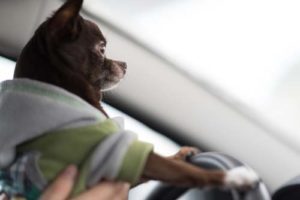
Dogs can get motion sickness, just like people. For that reason, there are special pills. If your dog suffers from motion sickness, talk to your vet.
Some prescribed medications for this condition would make riding a much more enjoyable experience for your dog.
You can also check your local big box pet store or online retail site for non-prescription options.
If you are flying or going by train, I recommend talking to your vet and getting something you know will work.
Riding in a closed compartment that makes little to no stops while a dog is vomiting is not easy.
A sure thing is best for your pet, you, and fellow travelers.
If your dog has never flown, it is best to give him something for motion sickness as a precaution.
If you are making a road trip in your vehicle, experiment with natural motion sickness remedies for your dog.
Unfortunately, in my experience, those rarely work well.
RELATED: 4 Essential Tips For Traveling With Dogs That Will Keep Them Safe
You may need to vaccinate your dog (but not too much)
Before going on an extended trip, bring your pup to the vet and ensure he is healthy and up-to-date on vaccinations.
Don't get a trip spoiled by a sick dog.
Make sure to let your vet know where you are going, especially if you travel outside the country.
Some vaccines are required, while others are options but recommended.
Also, educate yourself on the over-vaccination of dogs and what vaccines to avoid. Some vets like to prescribe more than is needed “just in case,” which may not be good.
Different areas have different diseases, and your dog may need special vaccination requirements.
If you will be traveling by air, or other public transportation, a health certification by a licensed vet will be required.
Some states require that any animal entering their state, by any means, must have a certification (read more on this here).
Dog friendly hotels, restaurants and other places

It is best to plan ahead and see what hotels and restaurants are pet friendly (and many in the US).
Most people have the hotels already planned and reservations made.
While some don't allow dogs at all, most can make arrangements.
Those arrangements may be a $200 deposit or a $200 non-returnable pet fee.
Make sure the hotel understands that you will have a dog and that you know the rules.
Almost nothing is more annoying than finding a new hotel after all day on the road.
Unless you are okay going through the drive-thru all the time, it is best to plan places to eat.
Remember that it's illegal to leave your pet in the car, no matter the weather.
Also, many places have passed laws against pets being left in the car for any reason.
So, I would not recommend it unless you want to pay heavy fines.
It isn't only for heat stroke but for other safety reasons.
What if your dog got tangled in the seat belt and choked to death? What if someone broke into your car and stole your furry friend?
There are many reasons why leaving your dog alone is not a good idea.
It is always best to plan your dog's vacay trip and locate rest stops and eating places that are pet friendly.
Many extreme dog lovers are popping up in all kinds of places.
Most restaurants, hotels, and resorts will always accept dog owners.
Long Distance Traveling with Your Dog: Conclusion
So there you have it! Those are our best tips on how to travel long distance with a dog.
Long distance travel with dogs can be stressful for both you and your pup if you haven't prepared ahead of time.
This is especially important if you are traveling with dogs in a car long distance! Your pup could get motion sickness or go hungry or thirsty if you don't remember to pack the things they need!


